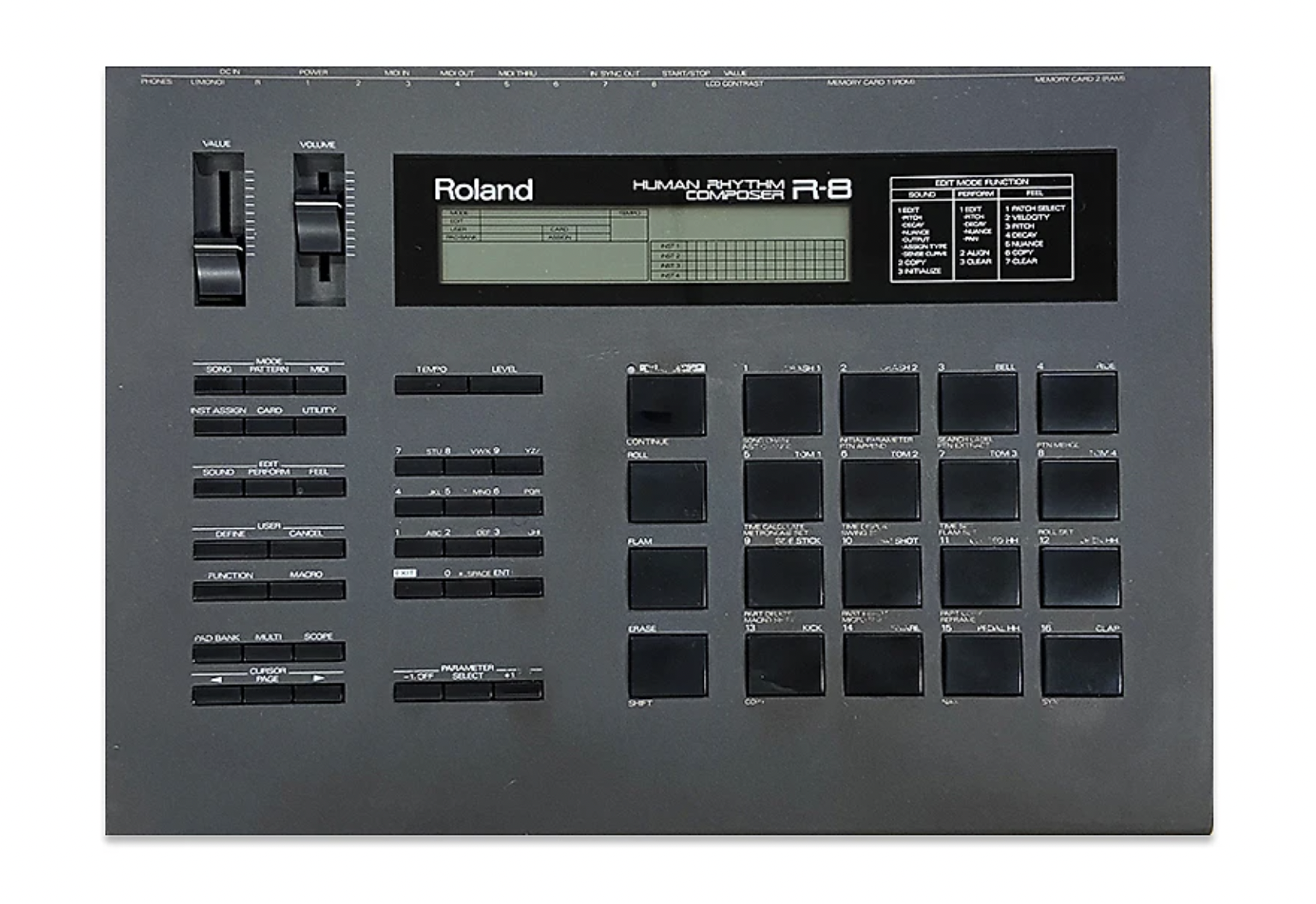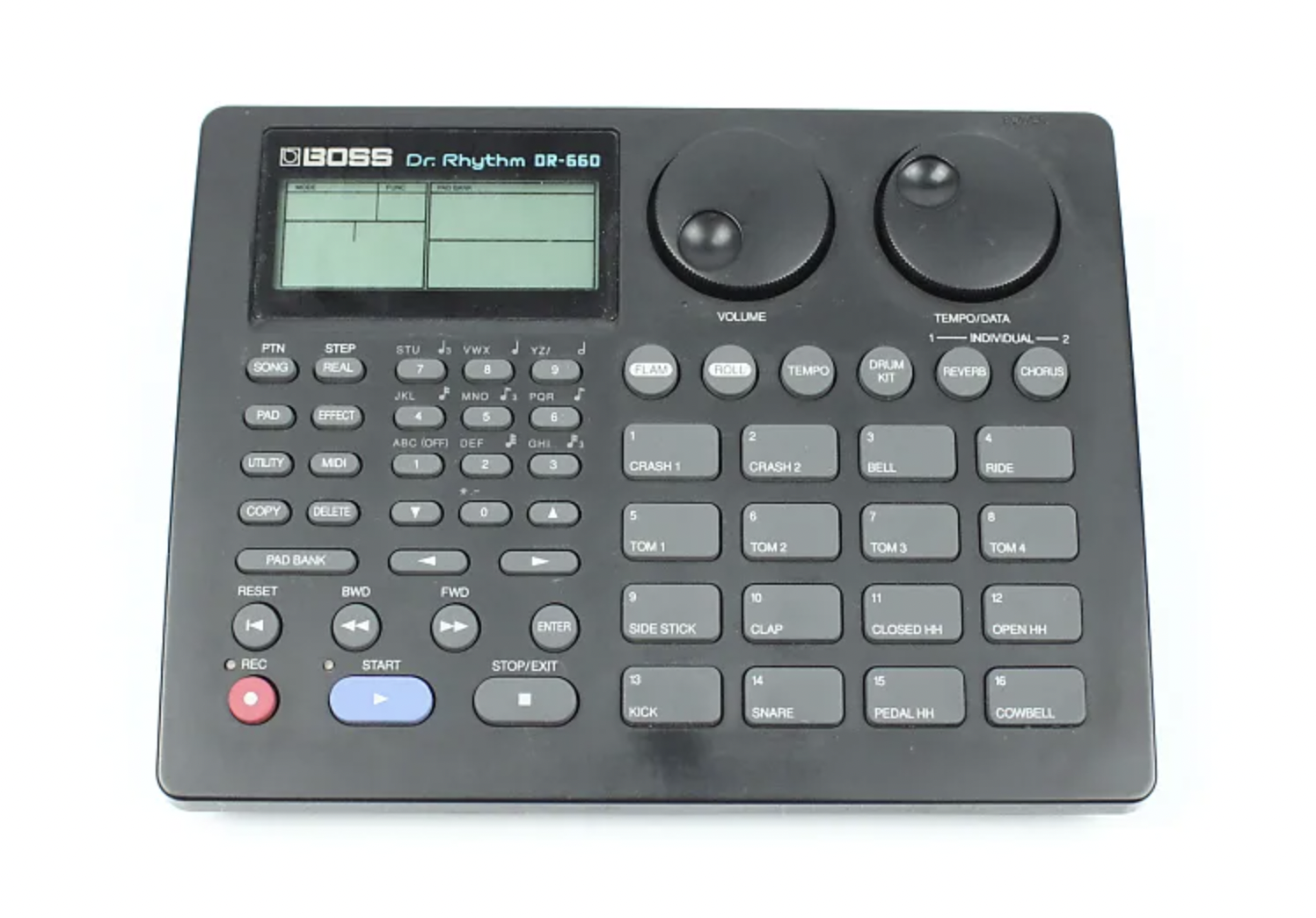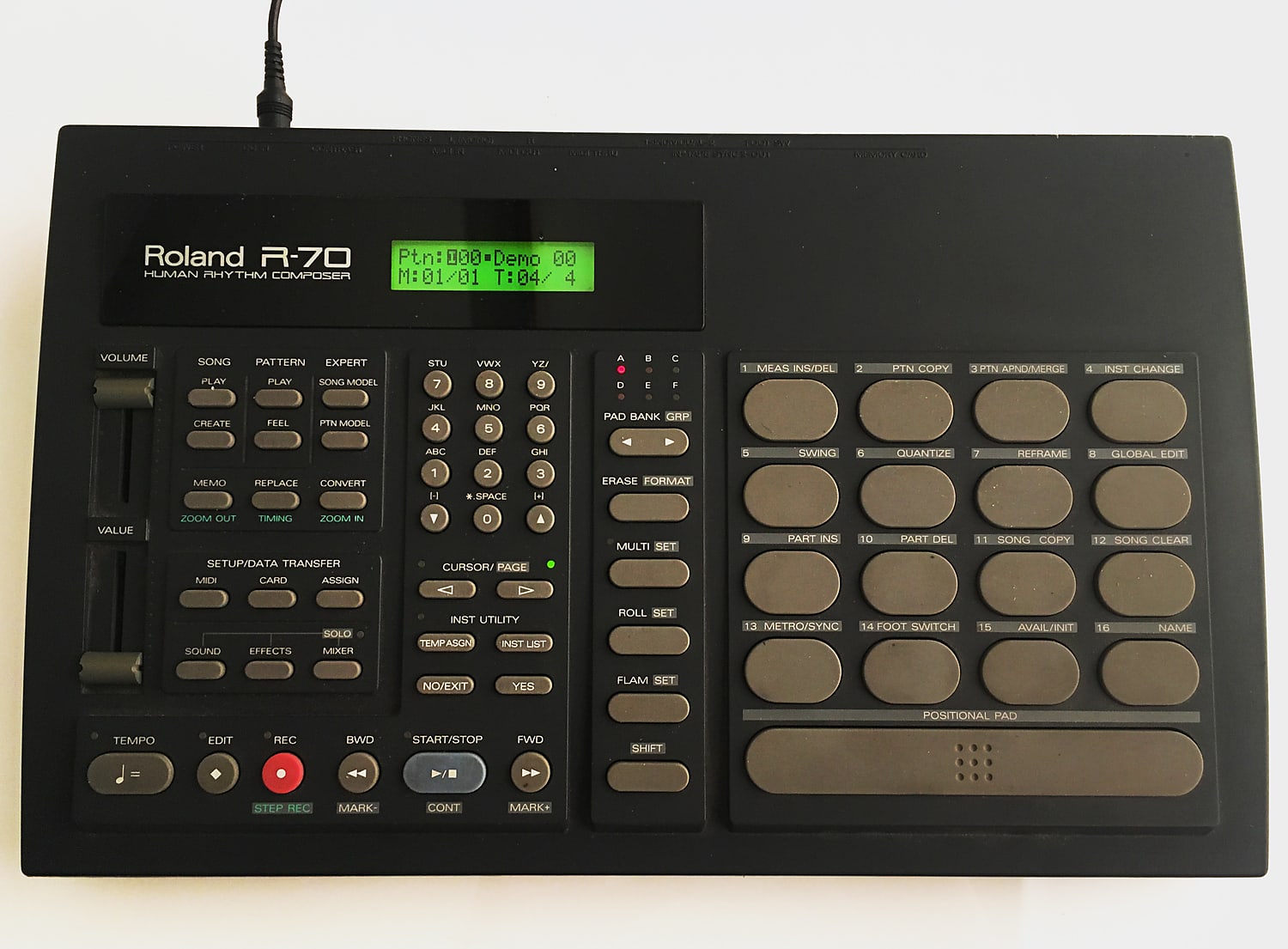The Roland TR-808 is rightfully celebrated as one of the most important drum machines of all time. Unveiled in 1980, the instrument helped define so many musical genres, from electro to dance to modern trap and drill. It was especially important for artists working in various electronic genres in the 1990s, including techno, house and IDM.
However, you might be surprised to learn that quite a few artists who are mentioned every year on 808 Day (August 8) as being famous users did not, in fact, use an actual 808 on their records—or at least not at first. Instead, they used digital drum machines with 808 samples.
These 808 mimickers ran the gamut from top-of-the-line flagship to low-cost releases. They were, however, all official Roland or Roland-associated products. Although cheaper than today, used 808s have always been on the high-price side, placing them out of reach for many young, cash-strapped producers. Because of this, as well as things like MIDI compatibility and accessibility—you could readily pick up these new machines at local musical instrument stores—young artists tended to gravitate towards digital emulations.
Today, we tend to overlook these digital gems because they aren’t real 808s. In these days of affordable analog clones, you’re more likely to buy an 808 remake than a digital substitution. However, they’re unique enough to make them worthwhile on their own beyond being just PCM-based copies.

In the 1990s, techno, IDM and other kinds of dance music exploded in popularity. Artists like 808 State, Orbital, The Shamen and Underworld all contributed to the creation of a new kind of music. They also all used the Roland R-8 to get 808 sounds.
Released in 1989, Roland’s R-8 Human Rhythm Composer was a big deal. Doing away with the outdated TR-style GUI of long rows of drum pads, the R-8 instead took a page from the MPC’s book and arranged its 16 velocity-sensitive buttons in four rows of four. With eight individual outs, 12-voice polyphony and four-part multitimbrality, it was certainly capable enough. It also had Feel, a feature to add human-like variations to patterns to avoid sounding like a machine gun. More useful to dance music producers, who took to the R-8 like ravers around a speaker stack, was the ability to not only alter pitch but sequence different pitches, a feature used by Autechre (among others) on their early records.
Packed full of 16-bit PCM samples of drums, it had a sound quality that really impresses those who use it to this day. Punchy and crisp with plenty of headroom, the samples clearly benefited from quality DACs. Unfortunately, of the 68 instruments, exactly zero were 808s. To get the famous boom, you had to buy a ROM card: SN-R8-4 Electronic, to be exact. This gave you 26 additional sounds, including 11 808 one-hits. While the cards were not so expensive at the time, given their rarity they have now shot up in value on the secondhand market.
Perhaps the most famous ‘90s R-8 user was Richard James aka Aphex Twin. He used the R-8 extensively on Selected Ambient Works Vol. 1, Polygon Window and, more recently, Syro, which lists both the R-8 and the rackmount R-8M.
While the R-8M, released in 1990, may be useful for producers who don’t need the sequencer but still want access to the sounds (and the Feel functionality), it’s 1992’s R-8 MKII that really sets hearts aflutter. Upping the number of internal voices to 200, it includes all of the 808 samples plus the 909 and CR-78 sounds from the dance ROM card, and more. Roland made far less of these than the original R-8 but if you can track one down, you’ll be in techno heaven.

For many ‘90s producers, the R-8 and its many varieties were too pricey. Although cheaper, the cut-down R-5 was of less interest because it didn’t have a ROM card slot and so couldn’t play dance sounds. For bedroom producers and others just getting started, the Boss range of Dr. Rhythm drum machines was much more affordable.
Although 1989’s DR-550 and 1992’s DR-550 MKII found their way into many home setups, they didn’t make as big of an impact on recorded music as the more upscale DR-660. Released in 1992 and featuring input from Roger Linn himself, this budget beat box featured 256 16-bit sounds, including the ever-popular 808 set. The samples have punch and power and are an audible step above those in the DR-550s. Although not as detailed as the R-8’s, they’re good enough to get the job done.
While Squarepusher is known for making the most of the 660’s sequencer and roll function (which is perfect for build-ups), and the box has been used by Orbital, Legowelt (particularly his Smackulator side project) and even Larry Heard, its biggest fans were a little more underground.
Chicago house legend Jesse Saunders founded the Dance Mania label in 1985. By the 1990s, the label had started putting out what came to be known as ghetto house: raw records based around classic 808 and 909 beats. The main production tool for most Dance Mania ghetto house tracks was—you guessed it—the Boss DR-660. Thanks to the drum machine’s chromatic mode, where you could make basslines out of one of the included sampled bass sounds, you could build up a record-ready jam with just that drum machine.
Not house but still dance, the DR-660 was also popular in Memphis rap productions. Another genre seemingly built around 808s, it was actually the DR-660 that producers often used.
Boss released a few more Dr. Rhythm machines over the years, notably the orange-buttoned DR-770 and silver DR-670, but none captured the interest of dance music producers like the 660. Its combination of sound sets, features and price made it something of a perfect storm for producers.

The same year that Roland released the R-8 MKII, it also debuted its successor, the R-70 Human Rhythm Composer. Similarly priced and specced although looking more like a Dr. Rhythm on steroids than a descendent of the R-8, the R-70 didn’t make much of an impact at first. Perhaps having competing Human Rhythm Composers on the market at the same time wasn’t a wise move. However, like some other Roland products, its cultural impact would come to be felt after it had already ceased production.
By the mid-1990s, ghetto house was starting to morph. Tempos were getting faster and patterns were getting more complex. Thanks to Dance Mania artists like DJ Deeon and DJ Slugo, Chicago dance floors were being primed for what would come to be called juke and footwork.
The first artist to be credited with a footwork track was RP Boo. Originally a dancer but wanting to branch out into production, he followed a piece of advice from ghetto house and juke producer DJ Slugo to get an R-70, a drum machine that Slugo used in his tracks. RP Boo grabbed the last one from Guitar Center but the production newbie had to figure out its operation through trial and error, as it didn’t come with a manual. This led to an unusual production style that favored tight, hypnotic 808-focused loops that were great for dancing. Footwork was born.
As the successor to the R-8, the R-70 inherits many of its older sibling’s Feel functions as well as a positional pad for controlling them. It also gets effects, apparently a drum machine first, with reverb/delay or chorus/flanger. In terms of sounds, it comes loaded with 210 sounds including the ever-popular 808 kit. It also has a number of parameters to alter the sound, including attack damping for softening the transient portion of a sample, envelope decay, pitch adjustment and a nuance function, which provides round robin-style variations of certain sounds. You can also layer up to two sounds to create fat sample stacks. As for the sound, it’s brighter than the R-8 but still punchy.
The R-70 remains something of a dark horse in Roland’s drum machine stable; the last of a certain style before groove boxes took over in the late 1990s. Unlike the R-8, which is almost universally adored, the R-70 is polarizing, with some loving it and others hating it. Footwork and juke fans are all over it though, as are modern funk producers like Chromeo and Dâm-Funk.
Roland’s 808 legacy continues to this day, with many subsequent releases featuring 808 samples. However, the role that these in-between machines played—the last of the flagships R-8, the budget-minded DR-660, and the under-appreciated R-70—shouldn’t be forgotten.
Want 808s without the retro machinery? Here are some of the modern Roland products that feature 808 drum sounds.
